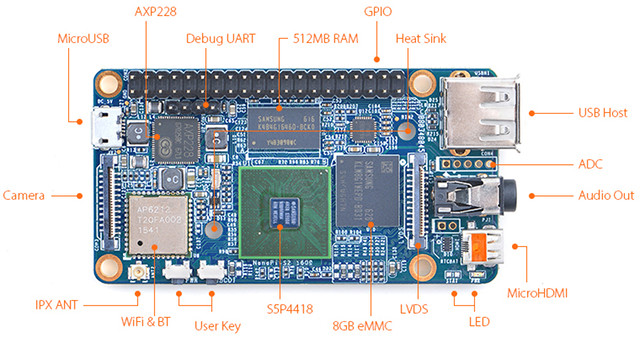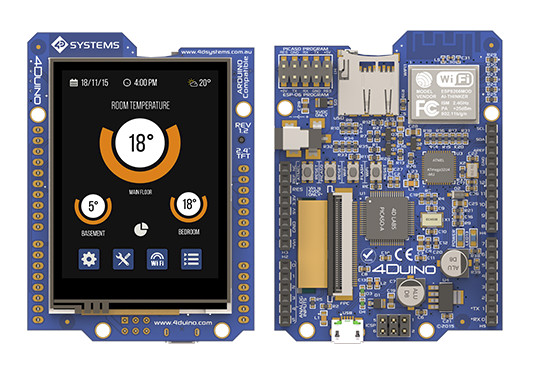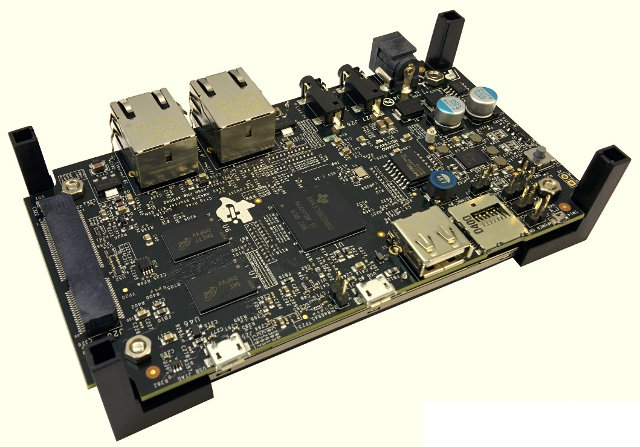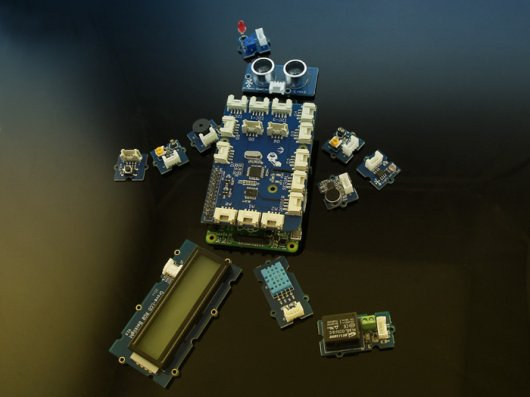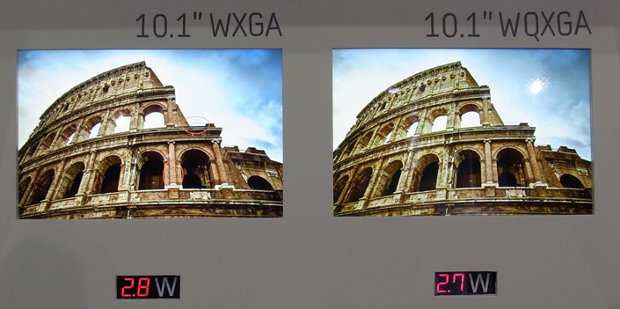FriendlyARM has released a bunch of Allwinner based NanoPi Allwinner boards recently, but they also have some Samsung/Nexcell S5P ARM Cortex A9 boards in their portfolio, and the latest is NanoPi S2 with Samsung S5P4418 quad core processor, three display interfaces, a camera interface, wireless connectivity through WiFi and Bluetooth 4.0, a 40-pin “Raspberry Pi” header, and more. NanoPi S2 specifications: SoC – Samsung/Nexcell S5P4418 quad core Cortex A9 processor @ 400 MHz to 1.4 GHz with Mali-400MP GPU System Memory – 1 GB DDR3 Storage – 8GB eMMC flash + micro SD slot Video Output / Display I/F – micro HDMI port up to 1080p60, 24-pin LCD RGB interface, 24-pin LVDS interface Audio – 3.5mm audio jack, micro HDMI Camera – 24-pin DVP camera interface Connectivity – 802.11 b/g/n WiFi + Bluetooth 4.0 classic & LE (AP6212 module); IPEX/u.FL antenna connector USB – 1x USB 2.0 Host, 1x micro […]
4Duino-24 is an Arduino compatible 2.4″ Color IoT Display Module with Atmel MCU and ESP8266 Module
I played with ITEAD Studio NEXTION serial color displays for Arduino boards and the likes a few months ago, and while the hardware seems good and the company offer a large choice of 2.4″ to 7″ models at a very affordable price, I didn’t find the Windows software to create the user interface to be very user-friendly. 4D Systems, an Australian company specializing in “graphics solutions”, will soon launch a similar 2.4″ display, but integrated into an Arduino compatible board also featuring an ESP8266 module for WiFi connectivity. 4Duino-24 “LCD IoT Display Module” specifications: MCU – Atmel ATmega32U4 micro-controller with 32KB flash, 2.5KB SRAM, 1KB EEPROM Storage – micro SD card slot (FAT16 support) for data and logging WiFi Module – ESP8266 based with 802.11 b/g/n connectivity, 1MB flash, support for Wi-Fi Direct (P2P), soft-AP Display – 2.4” LCD-TFT resistive touch display module with 240×320 resolution, 65K colors, and powered […]
$249 TI AM437x Starter Kit for Industrial Design Launched by Element14
Element14 has recently launched their “Texas Instruments AM437x Starter Kit” based on Sitara AM4378 Cortex A9 processor, including a board and touch screen LCD, and targeting industrial, HMI (Human Machine Interface) and networking applications. Element14 Texas Instruments AM437x Starter Kit specifications: SoC – Texas Instruments Sitara AM4378 ARM Cortex A9 processor @ 1 GHz with PowerVR SGX530 GPU System Memory – 1GB DDR3L SDRAM (2x 4-Gb Micron chips). Storage – 64MB SPI NOR Flash (MX66L51235FMI), serial EEPROM with board specific data, 1x micro SD slot Display – 4.3″ Capacitive Touch LCD Connectivity – 2x 10/100/1000M Ethernet RJ45 ports (Micrel KSZ9031RN transceivers), support for COM8 form-factor wireless boards via J20 Samtec card edge connector. USB – 1x USB 2.0 host port, 2x micro USB ports Camera – 2x 12 header for custom-made camera module from TI Audio – TLV320AIC3106 audio codec, 2x audio jacks for headphone out, and Line In Sensors […]
GrovePi+ Starter Kit Adds Multiple Sensors, Relays, an LCD, a Buzzer… to the Raspberry Pi Boards
Seeed Studio and Dexter Industries has introduced the GrovePi+ Starter Kit for the Raspberry Pi (All models) that includes the GrovePi+ board, and various Grove modules adding sensors, buttons, a buzzer, LEDs and more. GrovePi+ board connects to the GPIO header of the Raspberry Pi, and features several Grove connectors to interface with Groves modules part of the starter kit Grove Light Sensor Module Grove Sound Sensor Module Grove Temperature and Humidity Sensor Module (not the ‘PRO’ version) Grove Button Module Grove Rotary Angle Sensor Module Grove Buzzer Module Grove Relay Module 3x Grove LED Modules (One Red, Green, and Blue LEDS, all replaceable with user LED) Grove Ultrasonic Sensor Module Grove LCD RGB Backlight Module Grove cables, and a GrovePi+ guidebook are also included. The GrovePi+ board is an Arduino compatible board featuring ATMEGA328 microcontroller, and can be programmed with C/C++, Python, and experimental Go and node.js coding is […]
Samsung Demoes a WQXGA (2560×1600) 10.1″ LCD Panel
Samsung developed a 10.1-inch LCD panel that supports 2560 x 1600 resolution and exhibited it at FPD International 2011, which takes place on October 26 to 28, 2011, in Yokohama, Japan. This display using IGZO (In-Ga-Zn-O) TFTs technology. It is targeted to tablets and consume the same amount of power as current 10.1″ 1280×800 (WXGA) displays thanks to “Pentile” technology that uses red, green, blue and white color filters (CFs) as two pixels. The brightness and contrast ratio of the panel are respectively 400cd/m2 and 900:1. Its maximum power consumption is 3.4W. The power consumption of the panel excluding its backlight is just 26mW. Source: http://techon.nikkeibp.co.jp/english/NEWS_EN/20111026/199826/ Jean-Luc Aufranc (CNXSoft)Jean-Luc started CNX Software in 2010 as a part-time endeavor, before quitting his job as a software engineering manager, and starting to write daily news, and reviews full time later in 2011. www.cnx-software.com
See-through OLED & LCD Displays
Samsung Electronics and LG exhibited see-through LCD displays and Samsung Mobile Display see-through OLED displays at FPD (Flat Panel Display) International 2010/Green Device 2010, Chiba City, Japan. Samsung Electronics brought 2 different displays 23 inch and 46 inch LCD displays while LG Display showcased a 47-inch LCD display. See-through displays use natural light as backlight during the day and use a transparent backlight system attached to the back of the panel during the night. Samsung Mobile Display exhibited 2 OLED displays (14 inch and 19 inch). The main applications of such displays can be: Digital signage. This is the number 1 application for such displays. You could have a real product at the back and the see-though display at the front displaying some product info and/or promotional videos. In the picture below, Samsung created a setup with real wine bottles and grapes in the background and a see-through display in […]


